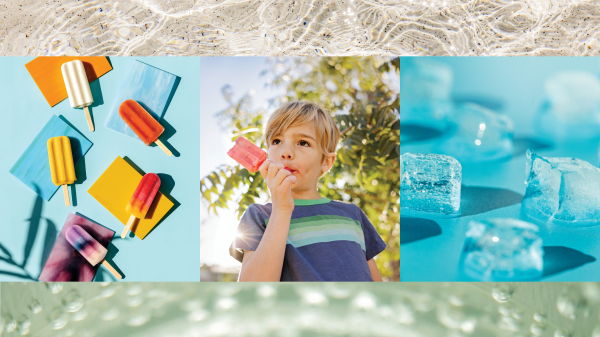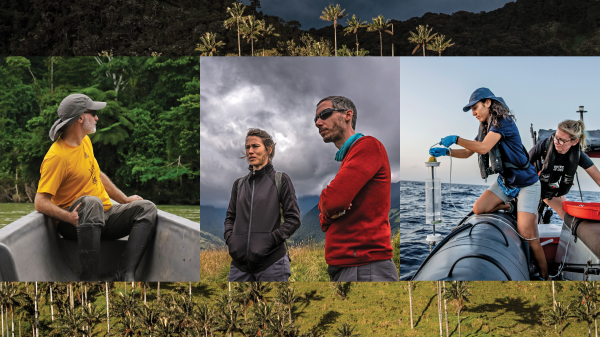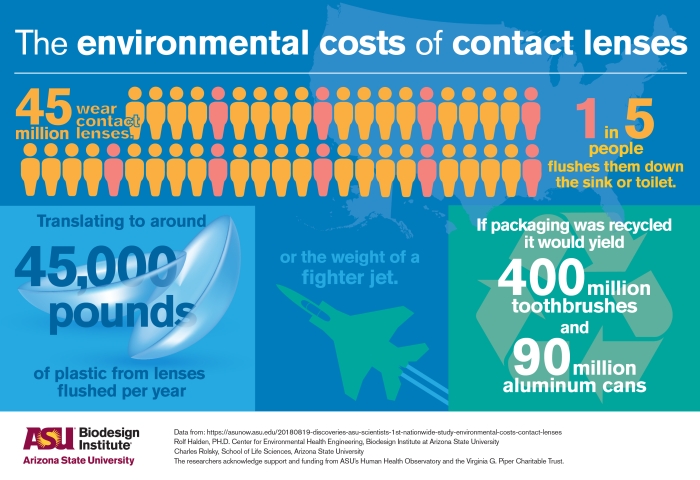Bausch + Lomb cites ASU research in contact lens recycling collaboration

Contact lens fragments collected from treated sewage. Photo by Charles Rolsky/ASU
Microplastics are a growing area of concern for researchers and the public, with much of the focus on plastics in our oceans. Until recently, the environmental impact of the plastic we put in our eyes has been largely overlooked. Now manufacturers and researchers are teaming up to raise awareness that disposing lenses down the toilet or the drain adds to the planet’s plastic pollution — and that recycling or disposing lenses with recyclable solid waste are eco-friendly options.
Every year, about 45 million Americans rely on contact lenses to see the world more clearly. This $2.7 billion U.S. market has made contact lenses more comfortable and disposable. Every day, plastic lenses are tossed away by consumers in various ways, perhaps without much thought to their ultimate environmental fate. Consumers in the United States use more than 3 billion contact lenses a year. While contact lenses are recyclable, their small size causes them to be filtered out at recycling facilities and directed to the waste stream.
Today, on America Recycles Day, Bausch + Lomb — the third-largest manufacturer of contact lenses in the U.S. — announced that its exclusive ONE by ONE Recycling Program has collected and recycled a combined total of more than 5 million used contact lenses, blister packs and top foils since the programs began late in 2016. The company collaborates with TerraCycle, a leader in collecting and repurposing hard-to-recycle post-consumer waste.
In its announcement, Bausch + Lomb cited findings from researchers at the Biodesign Center for Environmental Health Engineering at Arizona State University that indicate contact lens wearers may be unknowingly contributing to plastic pollution.
“Up until two years ago, there wasn’t a program that allowed contact lens wearers to properly dispose of or recycle their contact lens materials without ensuring that they did not end up in the environment,” said Amy Butler, vice president, Global Environment, Health, Safety + Sustainability, Bausch Health.
While the ASU research team commends Bausch + Lomb for demonstrating environmental consciousness, the ASU team is pushing for additional steps with contact lens manufacturers. Currently, manufacturers do not provide consumers with any information on the best environmentally friendly way to dispose of contact lenses after use.
“We would like to see more rigorous education and recycling throughout the contact lens industry, the addition of recycling symbols on packaging materials, and even a harder look at transitioning to polymer materials sourced from renewable feed stocks,” said Rolf Halden, director of the ASU center. “The fraction of contact lens packaging and lenses recycled to date is still rather modest.”
The ASU study results were reported by Halden and research partner, Charles Rolsky, at this year’s American Chemical Society conference in Boston, Mass. Along with Varun Kelkar, a graduate research assistant, the team examined 13 contact lens brands, made of nine different types of plastic polymers, concluding that lenses that are washed down the drain typically flow into wastewater treatment plants. At the wastewater plants, the lenses are broken down into microplastics, which accumulate in sewage sludge. For about every two pounds of wastewater sludge, a pair of contact lenses typically can be found.
“It's really great to see how research can be combined with publicity to shed light on problems and connect with others,” Rolsky said. “Bausch + Lomb have this awesome program that offers a big answer to this big problem. This collaboration helps us as scientists learn from the everyday lens-wearer about how this changed their disposal strategy.”
According to the news release, “the Bausch + Lomb ONE by ONE Recycling Program is available to contact lens wearers and optometrists in the United States. Contact lens wearers can take their used contact lenses and packaging to any of the nearly 3,000 participating eye care professionals’ offices or mail them via a pre-paid shipping label at BauschRecycles.com. Registered eye care professionals with the ONE by ONE Recycling Program are also provided custom recycling bins for collection in the office. Once the materials are received by TerraCycle, the materials are then recycled into post-consumer products.”
“You get a lot of momentum and excitement from seeing how your own data has changed people, but also from learning that influential companies have a similar mindset,” Rolsky said. “They also want to think green and reduce plastic waste.”
The researchers acknowledge support and funding from ASU’s Human Health Observatory and the Virginia G. Piper Charitable Trust.
More Environment and sustainability

Greater Los Angeles wildfires impacted by meteorological misfortune
Editor's note: This is a quickly changing situation. The information in this article is accurate as of time of publication.Los…

A water fix that takes on the yuck factor
Written by Christy Spackman, an ASU assistant professor and senior global futures scientist. This essay is adapted with…

At home in the wild
By Kristin ToussaintEditor's note: This story is featured in the winter 2025 issue of ASU Thrive.Way up in the Andes mountains in…
